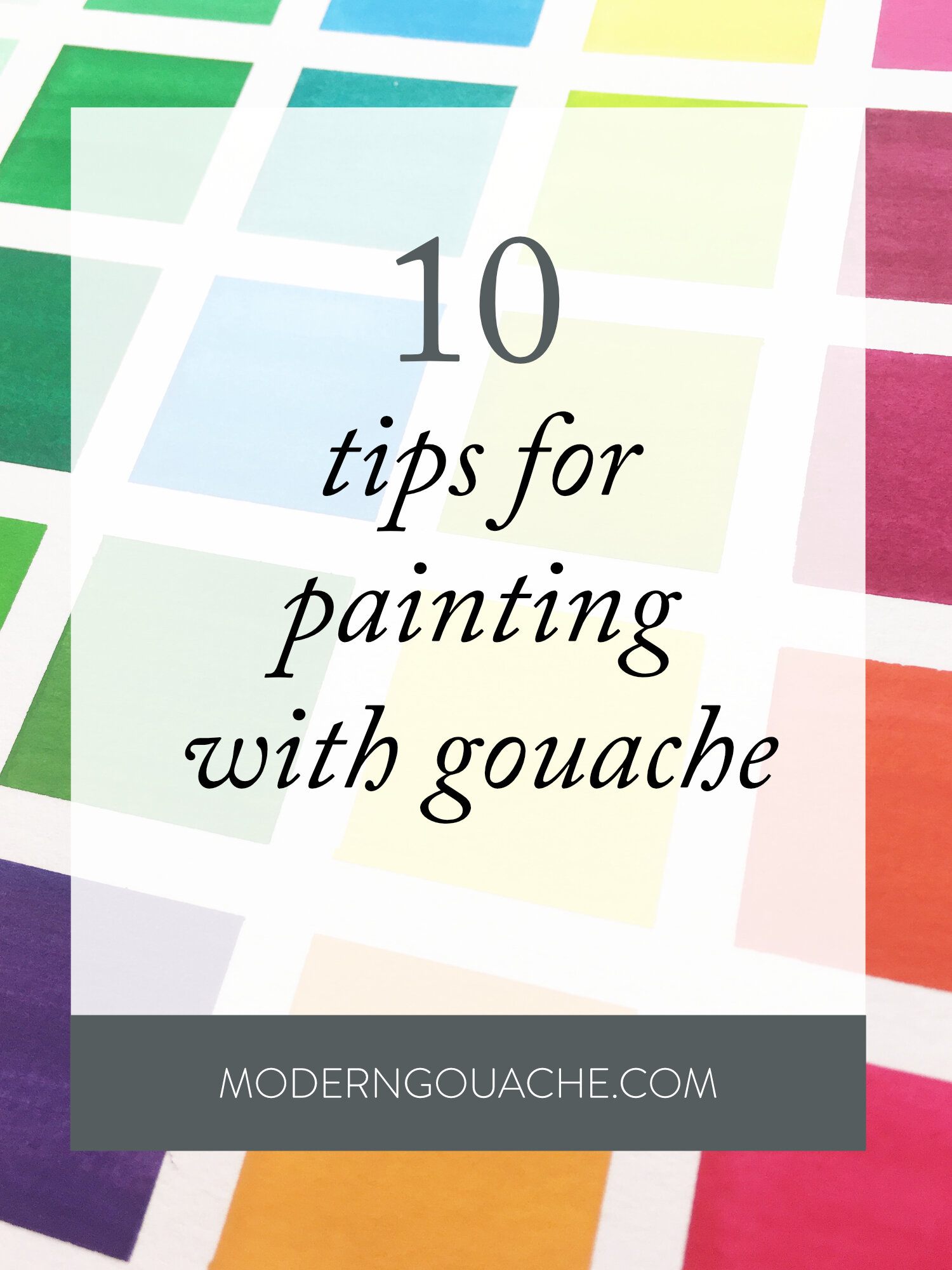10 Tips for Painting with Gouache
It's no secret that I love gouache. Everything from its velvety matte finish to its stubborn refusal to stay wet longer than a few seconds delights me. I want everyone to give this quirky medium a go and these are my top tips for getting started.
Work with the medium
Accept the working characteristics of gouache and go with them. You will get the most enjoyment out of gouache if you don’t try and fight it. Embrace its ability to dry quickly and its beautifully opaque finish.
Paint deliberately
Gouache is no shrinking violet. Because of its quick drying time, paint is often layered and colors ’tiled’ next to each other. Overworking an area can result in re-activating the layer underneath, so keep brush strokes bold and deliberate and allow to dry between layers.
Use a large brush for smooth coverage
Gouache is excellent for large areas of smooth color. Make your life easier by using a wide flat or filbert brush to fill in large open areas.
Work on toned paper
If you are coming to gouache from watercolors, you might find it helpful to work on toned paper while you get into the groove of painting opaquely. It will give you a quick visual if you are over-diluting your paint.
Practice matching colors
Getting the perfect colors can make or break your masterpiece. Learning to mix the colors you want will save you time and money and allow you to tackle color confidently.
Practice observing colors
So this goes hand-in-hand with matching colors. To match the right color, you need to be able to see the right color. When you are getting started, it can be helpful to snap a photo on your phone and use a color-dropper to pick out a correct color.
Change your water often
Because gouache is so heavily pigmented, your water can become muddy quickly. If you have ever left a jar of dirty gouache water out, you will eventually see the pigment settle to the bottom in a chunky layer. Yuck. Keep your colors clear and vibrant by changing your water frequently.
Allow time to learn its quirks
OK, we’ve all been there; you see something inspiring online and decide to try out a new medium. But all you get is a muddy, frustrating mess! Don’t lose heart! Everything has a learning curve, and to really benefit you should allow yourself time to become familiar with its ways. Start out by painting smooth, opaque layers and then progress to more complicated blending and color layering after.
Experiment
One of the joys of trying out something new is that you have no idea of what you “should” or “shouldn’t” do. These are the best times to experiment and develop a feel for the medium. Try out some of the things you like about other artists work and don’t be afraid to make a mess. If you don’t get a few things wrong, how will you know when you get it right?
Find the consistency sweet spot
Its heavy pigment load and flat finish makes gouache quite thirsty. If you don’t have enough water, the paint will quickly start to drag along the page. The perfect amount of water will allow the paint to glide around the paper as smooth as butter without affecting its opacity. Finding that sweet spot is one of the a-ha moments with gouache.

